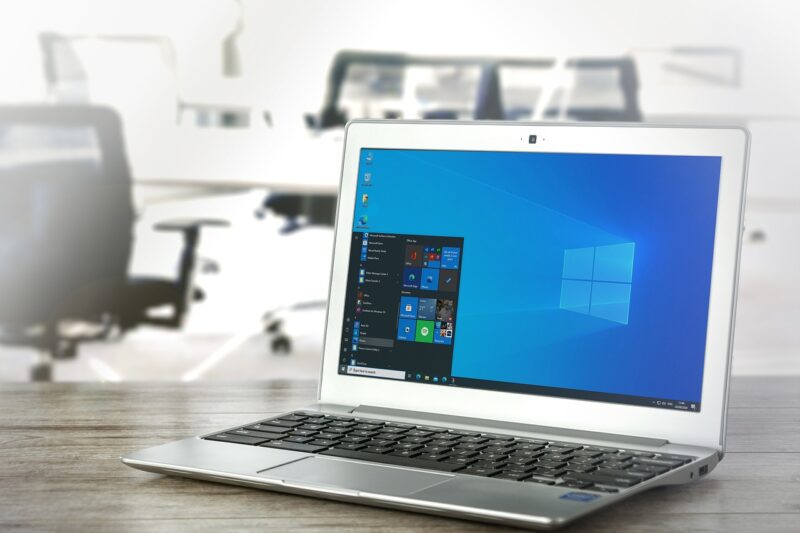Windows vs. macOS: Which Operating System Reigns Supreme for Productivity?
November 12, 2024

When it comes to productivity, the choice of operating system can significantly influence how effectively you work. The two major contenders in this arena are Windows and macOS. Each system offers its own unique features, tools, and interfaces, making the debate over which one is superior for productivity a common topic among users. In this article, we will delve deep into the capabilities, strengths, and weaknesses of both operating systems, helping you determine which one might be the best fit for your productivity needs.
1. Overview of Windows and macOS
Windows, developed by Microsoft, has been a dominant force in the personal computing market for decades. Known for its versatility and compatibility with a wide range of hardware, Windows powers an extensive array of devices from different manufacturers.
On the other hand, macOS, developed by Apple, is recognized for its aesthetic design, user-friendly interface, and seamless integration with other Apple products and services. Though macOS is designed to work exclusively with Apple hardware, its limited compatibility also means it offers a highly optimized experience.
This dichotomy sets the stage for our deeper exploration into productivity.
2. User Interface and Experience
The user interface of an operating system can significantly affect productivity. Below, we compare the two systems:
Windows Interface
Windows 11 introduced a revamped interface that emphasizes simplicity and ease of use. With features like Snap Layouts, Virtual Desktops, and a centered Start Menu, Windows aims to streamline multitasking. Additionally, Windows offers compatibility with touch screens, making it versatile for various input methods.
macOS Interface
macOS is celebrated for its clean and minimalist design. The Dock provides quick access to frequently used applications, while Mission Control allows you to view all open windows at once, facilitating easier management of tasks. The consistency of design elements across apps contributes to an intuitive user experience.
In a productivity setting, users might prefer macOS for its elegance and integrated features, while Windows 11 may appeal to users who appreciate customization and flexibility.
3. Software Availability and Compatibility
The productivity tools and software available to users are critical in determining the usability of an operating system:
Windows Software Ecosystem
The Windows platform has an extensive suite of productivity apps, including popular software like Microsoft Office, Adobe Creative Cloud, and various industry-specific applications. Additionally, the capability to run virtually any software available, including many legacy applications, can be a significant advantage.
macOS Software Ecosystem
macOS holds a solid selection of productivity applications, including excellent native tools like Pages, Numbers, and Keynote. Furthermore, many creative professionals prefer macOS for software like Final Cut Pro and Logic Pro, which are not available on Windows. However, some specialized business tools may be less accessible.
The availability of software can make a considerable impact on productivity, especially in sectors such as design, engineering, or education where specific applications are needed.
4. Performance and Reliability
The performance and reliability of an operating system can notably affect productivity, particularly during intensive tasks:
Windows Performance
Windows PCs come in numerous configurations, allowing users to choose hardware that meets their needs. For power users, this means the potential for high-performance setups. However, the diversity in hardware can lead to inconsistencies in driver support and system reliability.
macOS Performance
macOS is typically optimized for Apple hardware, leading to smooth and reliable performance across devices. Features such as optimized memory management and efficient resource allocation often enhance the user experience, particularly in creative tasks.
When reliability is paramount, macOS generally provides a more consistent experience, while savvy users may find ways to extract greater performance from a tailored Windows setup.
5. Multitasking and Workflow Efficiency
Efficiency in multitasking can make or break productivity, and both operating systems have unique approaches:
Multitasking in Windows
Windows 11 introduced features like Snap Layouts that allow users to organize and manage multiple windows more efficiently. Virtual Desktops also provide an organized way to separate workspaces, which can enhance productivity for users juggling different projects.
Multitasking in macOS
macOS offers robust multitasking capabilities through Split View and Mission Control. Users can easily toggle between apps and windows, which is especially beneficial for those who thrive on visual organization. Additionally, features like Handoff and Universal Clipboard enhance seamless transitions between Apple devices.
Ultimately, the effectiveness of multitasking may depend on user preference and their specific workflow requirements.
6. Security and Updates
Keeping systems secure and updated is a priority for any productive environment:
Windows Security Features
Windows relies heavily on third-party antivirus tools to bolster security, requiring users to remain vigilant about threats. Windows Defender has improved over the years, but the open nature of the platform still poses risks.
macOS Security Features
macOS is known for its tight security protocols, with features like Gatekeeper, which helps protect users from running unverified software. Apple’s controlled ecosystem and regular updates often lead to fewer vulnerabilities, thus providing a more secure environment for productivity tasks.
For security-conscious users, macOS tends to offer more robust protection, which can ultimately enhance productivity by reducing downtime due to security breaches.
7. Price Considerations
Cost can be a significant factor when deciding which operating system to use:
Windows Pricing
Windows comes in various editions, allowing some flexibility regarding pricing. Users can build or purchase low-cost computers running Windows for budget-friendly options. This accessibility makes Windows an attractive choice for many users.
macOS Pricing
macOS typically runs on Apple hardware, which tends to be priced at a premium. While the upfront cost may be higher, long-term considerations such as resale value and longevity may justify the expense.
When weighing price, users need to consider both initial investment and ongoing value over time.
Conclusion: Which Operating System is Right for You?
The ultimate decision of whether to go with Windows or macOS boils down to personal preference and specific productivity demands. Windows offers unparalleled flexibility, software availability, and affordability, making it a robust choice for many users, especially in diverse work environments.
Conversely, macOS maintains a strong reputation for optimized performance, integrated workflows, and security, particularly beneficial for creative professionals and those embedded in the Apple ecosystem.
In the end, the choice depends on individual requirements—whether you’re after a customizable environment, expansive software support, or a seamless, aesthetically pleasing experience. Whichever side you choose, understanding the strengths and limitations of both systems will empower you to maximize your productivity.
Emphasizing your professional needs and personal comfort with each operating system will ultimately direct you towards the one that enhances your productivity the best.







